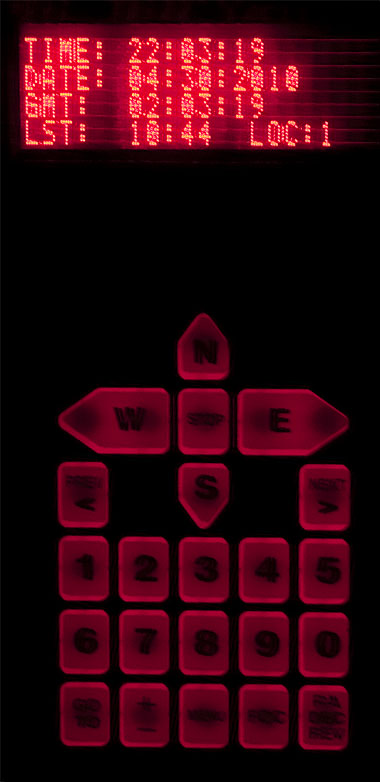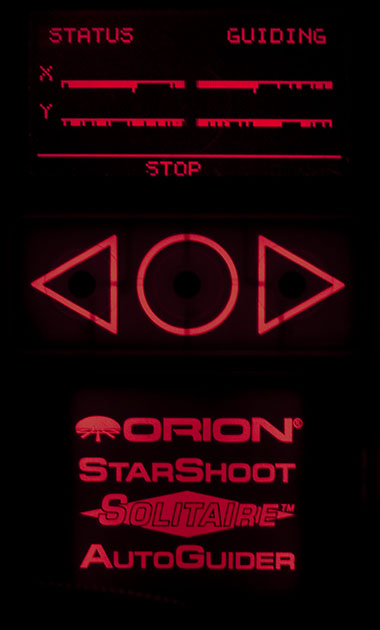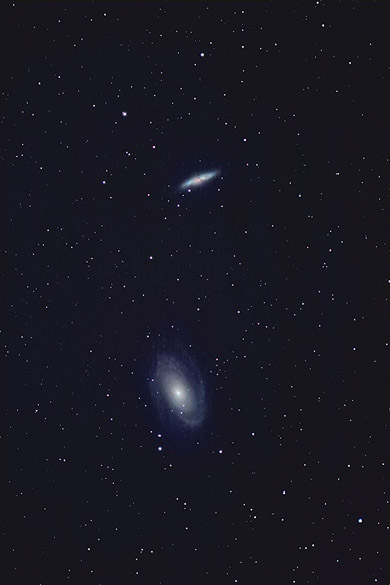|
|
4/30/2010. Third night with the A-P Mach1GTO. Amazon and UPS conspired to hand me a battery box. That will let me put the outfit to work under the wider skies over the cul de sac at the top of the driveway, up'n out from under the pines that surround me in the back yard. I placed the AGM battery I bought for the motorcycle a couple of years ago in it, padded and braced the smallish battery, and have been charging it for a few hours. Judging by its size and weight and the specs for similar batteries, it's probably good for 9-10 Amp hours.
If this works, and I see no reason it shouldn't, then I'll put a bigger battery in the box. The battery case is said to accomodate a Group 24 or Group 27 battery. Some quick shopping suggests that deep cycle batteries with about 55 AH capacities are available in those sizes. One pound per AH is a fair rule of thumb. Let's see how this power source proves out before dealing with heavier fuel. Later that same day: after six or seven hours, the battery was still not reporting a full charge (it's been neglected for many months). In fact, after charging all afternoon and evening it was only showing a fraction over 12 volts. I thought I'd try it anyway for the light duty and short service needed to drive the mount and autoguider between twilight and Moonrise. Both devices powered up just fine, but the mount's LED went from red to yellow after only a few minutes. I returned the battery to the charger (a "Battery Tender Plus") and ran an AC cord back out to the mount. Tonight I have the 50D and IDAS LPR filter ready to go. I'm thinking 5 minute exposures of M81 and M82 after nightfall and before Moonrise. Nautical twilight ends at 9:11, astronomical twilight at 9:45. The waning gibbous Moon rises at 10:50. That should be just about enough time for one decent image. At 8:15, with the Sun barely below the true horizon, I slewed to Capella. Easy pickings. I focussed the 50D using LiveView and 10x magnification. I put the star dead center on the 50D ground glass and recalibrated the mount. Now we wait for darkness and hope for clear skies. Tonight's forecast was not good, so whatever I get is a bonus. As astronomical twilight ended, I was futzing about with the focus of the guider, tweaking composition (1 minute quick looks with the 50D at ISO 800), and so on. My first attempt to guide produced moderate, constant corrections in Y. I broke it off and re-did the polar alignment. Misalignment may not help photos, but it does help to sort out autoguiding -- you learn nothing from doing no corrections, after all. An aggressiveness setting of "2" is too low. Corrections are repeated constantly for several seconds -- 10 or 20 -- rather than just being made and done. So we'll try "3" with an auto-guiding rate of 0.5x sidereal. One of these combinations of rates and aggressiveness is j u u u s t right. At 9:40, I began a sequence of 300 second exposures of M81 and M82 seperated by 30 second pauses to let the camera's amplifier cool (else its heat produces a bloom in one corner of the image). I expect a nice photo out of this. While lying by the telescope keeping an eye on tracking data and just looking around, I noted that the Trio in Leo is well placed west of the pines to the south. And I saw that from my usual setup location, M3 rises through the gap in the pines we call the 19th fairway so it could be imaged earlier than most targets. The 30 second cool-down delay seems to help significantly with respect to amp glow. An unexpected benefit of those 30 second pauses between exposures is that I can use them to mess with the guiding parameters. Thirty seconds is plenty of time to reset the aggressiveness in both X and Y. Settings of "4" in X and Y produce decent graphs, but not as flat as last night's. I gather my polar alignment is not as good. Exposures are only half as long, so I don't expect field rotation to be a problem. Still... adopt a good alignment procedure before going far afield or attempting anything ambitious. For my efforts tonight, I got 13, 300sec subframes which I combined into a 75min exposure using Deepsky Stacker. The last eleven, made with adjusted guider settings, are measurably (but barely perceptibly) better than the first two. Star images are about 6" FWHM, so there's room for at least a factor of three improvement. Most of the star bloat is symmetrical so I believe it is owing to misfocus rather than to guiding issues. Although I made dark and flat frames, I have not used them for the image shown here. Processing: I applied Noise Ninja to each frame in PS CS4 and saved the images as 16bit TIFF files. DSS worked on these. I saved the result as a FITS file and reimported it to Photoshop to clean up banding and assorted other issues [May 2: which I have found are much more serious in planes 1 and 3 than in plane 2]. The final product is still rough but promising. I'm still having to work the data too hard and the "shadow detail" is coming out mottled [Can you really call the combined light of a hundred billion suns in M81's spiral arms "shadow detail"?]. The likely answer is more data, as it usually is. There's headroom in the sky for 10 or 15 minute sub-exposures, but noise in the uncooled DSLR is a limiting factor. There must be ways, else it'll be time to get the CCD camera out before I really want to. First thought: make more and longer subs and use the flats and darks. [May 2: I reworked the data beginning with the FITS output. I used only plane 2 of the FITS file which I saw had significantly less noise than the other color planes. After optimizing that data as a grayscale image, I added color from a single Canon RAW file after using Noise Ninja and Gaussian blur to knock down chroma noise. Much better, but still far short of ambitions.] And at 1:30 AM, the battery finally reported that it's ready for use.
|
:: top ::
© 2010, David Cortner



